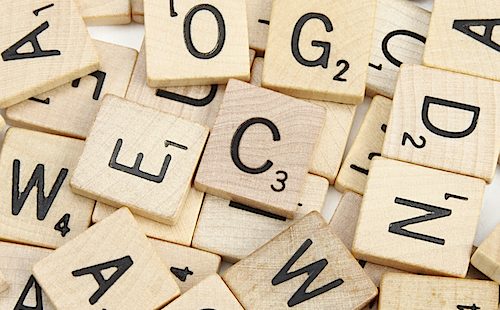Invented by out-of-work architect Alfred Butts during the Great Depression, Scrabble is a staple of word lovers’ lives. The popularity of this beloved game took off in the mid-1950s and has been an essential part of the canon of classic board games ever since.
To determine Scrabble’s tile values, Alfred Butts carefully analyzed letter frequency in various periodicals, including the front page of the New York Times. Butts’ original design aimed to create a game that would balance skill with luck, which he believed to be an important aspect of the games he loved.
But does Butts’ original design stand up to rigorous computational analysis today? Two researchers recently developed programs to process and analyze far more data and variables than could have been considered by Butts 75 years ago. Director of Research at Google, Peter Norvig came up with a model for letter-frequency counts based on the Google Books English-language corpora. (See Norvig’s research.) More directly related to Scrabble, Joshua Lewis (a post-doc at the University of California, San Diego’s Cognitive Science Department) proposed new tile values considering three variables: the frequency of letters in English, the frequency of letters by word length (the most valuable word lengths in Scrabble being two-, three-, seven-, and eight-letter words), and the ease with which one can play a letter (the blank tile and S are far easier to play than Q). Using a program he created called Valett that accounts for these concerns, Lewis proposes 14 tile-value changes. These include X changing from eight to five points, Z changing from 10 to six points, and J changing from eight to six points.
This sort of research is nothing new; John Chew, co-president of the North American Scrabble Player’s Association, says he gets at least one proposal for altering tile values every year. In a blog post in response to the rethinking of Scrabble tile values, Chew calls Lewis’ system a “catastrophic outrage” explaining that “[y]ou’d end up with a game that was…closer to just rolling a die to determine the winner.” Lewis maintains that “Valett is an attempt to keep the intentional luck in the game,” such as the blank tiles, “and remove the unintentional luck that has crept in over time as the use of English has changed.”
Scrabble’s manufacturers will not let their original tile values crumble under the pressure of this new research. Stefan Fatsis, competitive Scrabble player and author of Word Freak: Heartbreak, Triumph, Genius and Obsession in the World of Competitive Scrabble Players, told NPR in a recent interview that he supports the decision to not change the tile values, stating that these changes would “flatten out the values,” reducing “the element of luck” and making the game “more boring.”
What do you think? Should Scrabble tiles retain their original value? Or are the tile values in need of an overhaul in order to reflect the changes in English since Alfred Butts first calculated letter frequency in the 1930s?












